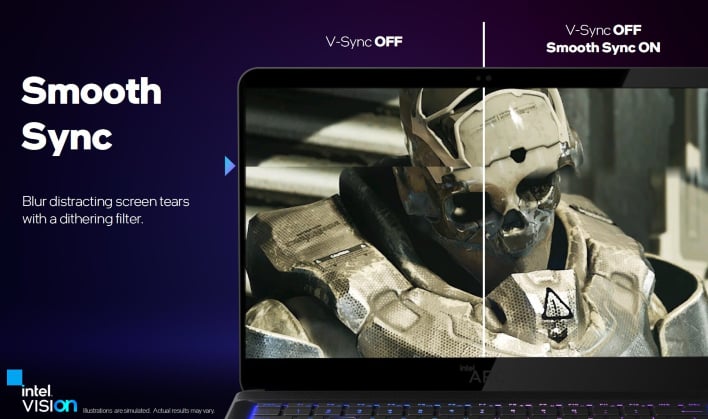How Intel Smooth Sync Aims To Fix V-Sync's Biggest Issue For Gamers

The Arc Alchemist GPU family has had a bit of a rocky beginning for Intel. Laptops with Intel's latest GPUs are still trickling into the market, while the desktop variants are yet to be officially launched. But that has not stopped Intel from trying to hype up its new venture into the GPU market by advertising some of the advantages its Arc GPUs are said to incorporate. One of those is what the company refers to as Smooth Sync.
Smooth Sync is Intel's in-house display refresh-rate technology alongside support for VESA Adaptive Sync. The technology is aimed at laptops and desktops with fixed-refresh rate displays, which do not have support for Adaptive Sync. The way the feature will work is to counteract the screen-tearing effect caused by the GPU displaying frames at a higher rate than the display's refresh rate, allowing gamers to turn V-Sync "off" in their games.

The technology will be a software based feature that will be included in Intel's Arc graphics drivers, and will work alongside its Arc Alchemist graphics processors.
Time will tell how much of an improvement this will actually bring to gamers with budget PCs, but it is a promising feature that can be improved over time, being it is software based. As more laptops are introduced to the market with Arc GPUs and the upcoming launch of Arc desktop cards, the immediate future for Intel's first generation discrete GPU is still a bit uncertain. But with features such as Smooth Sync, and other advantages like Deep Link, that future is one we are excited to experience and learn more about.
Top Image Credit: Intel

